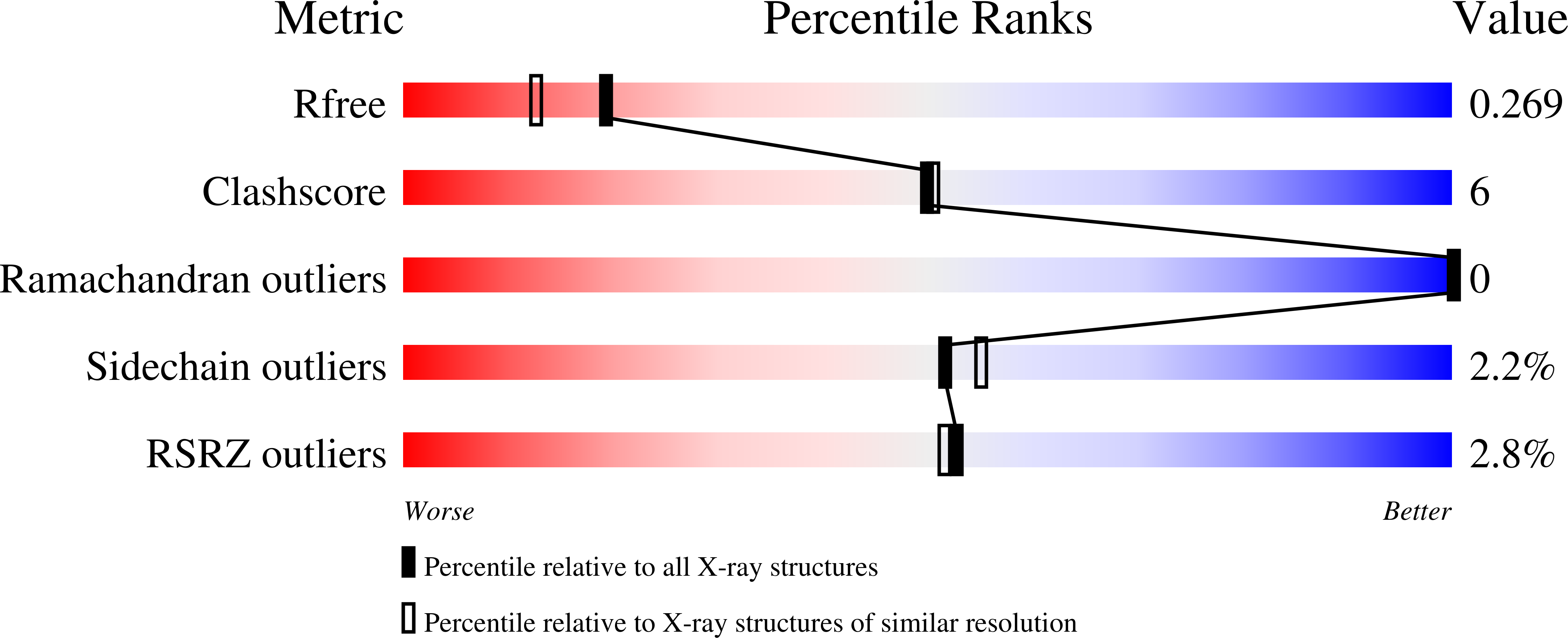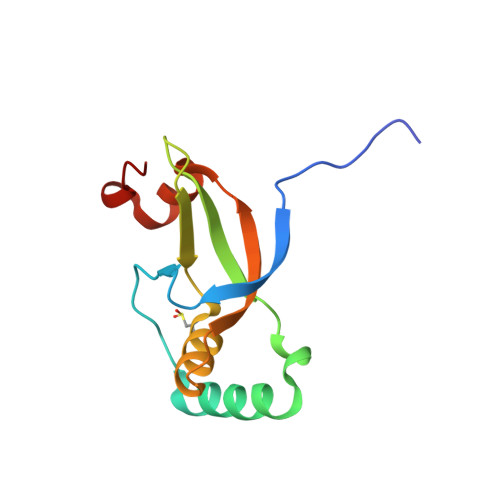Structural basis for the retroreduction of inactivated peroxiredoxins by human sulfiredoxin.
Jonsson, T.J., Murray, M.S., Johnson, L.C., Poole, L.B., Lowther, W.T.(2005) Biochemistry 44: 8634-8642
- PubMed: 15952770
- DOI: https://doi.org/10.1021/bi050131i
- Primary Citation of Related Structures:
1XW3, 1XW4 - PubMed Abstract:
Sufiredoxins (Srx) repair the inactivated forms of typical two-Cys peroxiredoxins (Prx) implicated in hydrogen peroxide-mediated cell signaling. The reduction of the cysteine sulfinic acid moiety within the active site of the Prx by Srx involves novel sulfur chemistry and the use of ATP and Mg(2+). The 1.65 A crystal structure of human Srx (hSrx) exhibits a new protein fold and a unique nucleotide binding motif containing the Gly98-Cys99-His100-Arg101 sequence at the N-terminus of an alpha-helix. HPLC analysis of the reaction products has confirmed that the site of ATP cleavage is between the beta- and gamma-phosphate groups. Cys99 and the gamma-phosphate of ATP, modeled within the active site of the 2.0 A ADP product complex structure, are adjacent to large surface depressions containing additional conserved residues. These features and the necessity for significant remodeling of the Prx structure suggest that the interactions between hSrx and typical two-Cys Prxs are specific. Moreover, the concave shape of the hSrx active site surface appears to be ideally suited to interacting with the convex surface of the toroidal Prx decamer.
Organizational Affiliation:
Center for Structural Biology, Department of Biochemistry, Wake Forest University School of Medicine, Medical Center Boulevard, Winston-Salem, North Carolina 27157, USA.
















